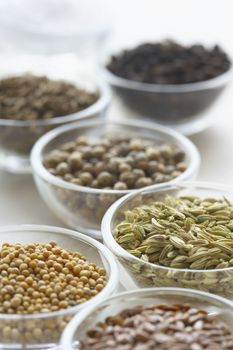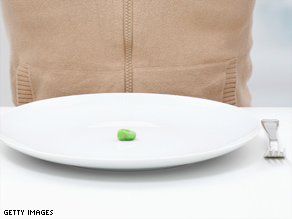Rain Forest Herb Gives You Lasting Energy -
Without the Crash!*
Dear Health Conscious Reader,
When I was hiking through the 
Sacred to the nearby Guarani tribe, it was literally a gift from the gods. According to tribal folklore, the Indians of the
I took it in the early morning before we hit the trail. After 18 hours through the jungles of
I realized that combining this ancient herb with cutting edge brain nutrients would create a powerful new formula. Not only would it give you more energy without crashing, it would help your memory too.*
 But the story gets better... After I got home, I started putting the pieces together. Working nights and weekends I had a trial formula within the first six weeks. Using myself as a test subject, I gave it a try.
But the story gets better... After I got home, I started putting the pieces together. Working nights and weekends I had a trial formula within the first six weeks. Using myself as a test subject, I gave it a try.
Right from the start I knew I was on to something. I tapped into a deep source of mental energy, heightened memory and a laser-like focus throughout the day.
All the individual components of my formula are backed up by modern clinical studies. And now for the first time, you can feel the startling results for yourself.
My name is Dr. Al Sears. I have a private medical pratice in
What I discovered during my trek through the Amazon will send your energy to new heights...it has the power to boost your memory and power of recall too.
Here's how it works.
Kick Start Your Morning Without Feeling Nervous or Jittery
The Amazon herb that kept me alert yet relaxed comes from a seed called Paullina cupana. The active compound is guaranine, a member of the caffeine family. But unlike regular caffeine, it's full of healthy fatty acids.
 The good fat gives guaranine a slow release. Its effect will gradually increase over a period of hours. It doesn't pick you up and throw you down like quick release caffeine. There's no crash with this stuff... and you don't get any of the nervous, jittery energy you do with caffeine.
The good fat gives guaranine a slow release. Its effect will gradually increase over a period of hours. It doesn't pick you up and throw you down like quick release caffeine. There's no crash with this stuff... and you don't get any of the nervous, jittery energy you do with caffeine.
Caffeine gets a bad rap sometimes but it's the most widely used drug in the world. And it's a proven mental performance booster. The studies number in the hundreds. One published in Neurology found that three cups of coffee a day cuts your risk of mental decline by over 50%.1
But there's a catch. Coffee gives you a short burst of energy, but overheats and excites your body. Guaranine has a cooling action that revitalizes and relaxes. The end result is more beneficial to your body. You get all the energy and alertness but remain calm, cool and collected.*
A team of Brazilian scientists studied the effects on rats. Their results were not surprising. Guaranine increased their physical activity, increased their physical endurance under stress and improved their memory.2*
But like I said, the story gets even better...
Give Your Brain the Power of Total Recall and Extreme Alertness
The effect of the Paullina cupana seed was amazing. It me gave the endurance to trek through the Amazon and left me with a wonderful feeling of clarity. But I was starting to see the bigger picture.
The Rain Forest herb works its magic by releasing acetylcholine in your brain. Acetyl-choline is a neurotransmitter. It's the brain chemical that lets your nerve cells fire through the synapse or gap that exists between the trillions of neurons in your brain.
If you have lots of acetylcholine, your mind is sharp and your memory is clear. When you drink coffee in the morning, the release of acetylcholine gives you the buzz that gets you going.*
But there's a problem... coffee will burn you out because it depletes your reserve of acetylcholine. Guaranine is slow acting with none of the caffeine side effects but it works in the same way. Eventually you lose your reserve of acetylcholine.
But if you trigger a release of acetylcholine and then rebuild your reserves you can sustain the amazing rush of clarity over the long term.*
That's The Realization I Had While Hiking Through The Forest...
I knew I could get the best of both worlds if I combined guaranine with powerful brain nutrients. One of them is choline, the building block required for the synthesis of acetylcholine. Introduce choline into the mix and you give your body the ability to manufacture this incredibly powerful neurotransmitter.
When you combine choline and guaranine you get a bigger release of acetylcholine - even more than taking guaranine on its own. That's what gives you the feeling of energy and mental power. But instead of depleting your reserves and burning out, you build them up.*
That means you can take my formula every day and get the same effect every time.
Getting More Choline is Essential -
Your Brain Needs it for Thinking and Remembering
Your brain has a huge appetite for choline. It's the primary building block for acetylcholine. You burn it up 24/7 as your brain uses it to maintain clear communication between trillions of neurons.
You need it for all the basics like thought, memory and sleep. It even controls how you move. Your muscles receive commands from your brain via acetylcholine. That means your sense of balance and stability is controlled by this key transmitter.
Like many nutrients, your supply of choline drops as you get older. As this happens, you can expect some or all of these symptoms:
- Poor recall and memory loss
- Fatigue or lack of energy
- Brain fog and/or a sense of confusion
- Problems falling asleep, tossing and turning
- Unable to catch on, or learn new things
- Feeling distracted or irritable
- Walking with a wobbly or shaky gait, unable to stay balanced
When Your Brain Doesn't Get Enough Choline
It Starts to Destroy Itself...
To survive, your body will scavenge materials from other sources when it can't get enough from its main supplier. When choline levels drop off, your brain goes on a scavenger hunt and extracts choline from nerve cell membranes. This last resort is called "auto-cannibalism" and it's very dangerous.
In the short term, your brain will use this technique to keep your memory and other functions up and running. But in the long run, your nerve cells end up badly damaged.
In the graph below, you can see how the nutrients DMAE and choline turn into the key neurotransmitter acetylcholine. DMAE is another powerful brain nutrient I will tell you about a little later. It's also in my formula. First, I want you to see the direct connection choline has to its end product acetylcholine.

As you can see, choline is one small step away from acetylcholine. Put more choline into your body and your brain gets more of the neurotransmitter that keeps your mind alert and your memory fresh.*
Clinical Studies Prove Connection Between Choline and Memory
It's very possible you've never heard of choline. Most people haven't. But it's one of the most important nutrients on the planet. And it's well researched. There are dozens of studies testing both animals and humans.
Here are just a few:
• Researchers who gave rats a choline supplement found they developed a sharper and longer memory than rats that didn't have extra choline. On day one, both groups of rats were performing their tasks successfully. This included avoiding electric shock as they moved through a maze.
On day two, the rats that didn't have the extra choline forgot about the electric shock and got zapped. But the rats that had the extra choline remembered the booby traps and successfully avoided getting shocked.3
• In a human study, researchers at Northwestern University in Chicago tested people with a choline deficiency. They gave them a series of memory tests and found below average scores. In the next stage, they divided the same people into two groups. One group received extra choline, the other didn't.
After 24 weeks, both groups repeated the memory tests. Not surprisingly, the group with the extra choline performed with flying colors and their results showed a dramatic improvement over the first round. The group that received no extra choline performed poorly. Their results showed no improvement over the first round.4*
Burn through Your Crossword with Lightning Speed...
My unique blend of choline and guaranine is like rocket fuel for your brain. Not only does it give you a better boost than your morning cup of coffee, it gives you the clarity of a mental giant.
You'll notice the lift right away. If you do crosswords you'll finish them in a fraction of the time. Things like organization, recall and comprehension just fall into place.
When you read something, you "get it." When someone is explaining something, you understand what they're getting at before they even get to the point. You move into a feeling of extreme alertness. You're aware of everything and it's all so clear.
The processing speed of your brain gets a twin-turbo boost. It's like stepping up to one of those super-computers NASA uses for space flight.
One of the experiences I appreciate most is the "alert but calm" feeling. Your mind can relax and let go. Your focus becomes almost laser like. And it lasts throughout the day. It's not a short-lived spike like coffee or other caffeine drinks.
I could have stopped there... choline and guaranine are enough to repair and rejuvenate your aging brain. But there's another key brain booster essential to my formula.*
This Nutrient Works So Well it Even Caught the Attention
Of the Bumbling Bureaucrats at the FDA...
A little earlier I mentioned DMAE. It's a natural, brain-stimulating nutrient found in anchovies, sardines and other fish. Studies show it increases levels of acetylcholine. As you know, acetylcholine is critical for learning and memory.5
I've been following the story of DMAE for decades. It works so well the FDA finally took notice and planned to approve it.
So what happened? The FDA discontinued it in the late 1970s after the manufacturer didn't agree to the expensive retesting required. Since the manufacturer wouldn't pay, the FDA dropped DMAE like a hot potato.
What a shame. DMAE provides a safe and non-addictive solution to a variety of cognitive and behavioral problems.
DMAE can also support learning and promote a healthy mood.* In one study, 50 kids showed improvement in just 10 weeks.6 In another study, children did better in concentration and skill tests with this nutrient.7 And there were no side effects like jumpiness, or an increase in heart rate.8*
It's easy to see why I added DMAE to my formula. It's one of the best memory boosters available. In combination with choline and guaranine, it's unbeatable. It has a synergistic quality that makes the three ingredients more than the sum of their parts.
Clinical studies show DMAE can:9*
- Boost IQ
- Accelerate mental speed and your ability to process thoughts and ideas
- Improve your concentration and eliminate early morning "fogginess"
- Promote a healthy mood
- Decrease irritability and over activity
- Increase attention without causing drowsiness
Cardiovascular and Cerebrovascular Health
There's one more thing you need to know about this formula... It has a very unique and clinically proven "side effect": It supports your heart and brain health.*
How is this possible?
Boosting the level of choline in your blood has a powerful effect on homocysteine and C-reactive protein (CRP). If you're a regular reader you've probably heard about these powerful markers. They are both better indicators for heart and brain health than anything else - including cholesterol.
Research has demonstrated that homocysteine causes oxidative stress to the vascular endothelium and that maintaining healthy levels of homocysteine is important for heart health.*
 Your body produces C-reactive protein as part of its overall defense. When part of your body is injured, it sends signals to the rest of your body for help. Your immune system then sends out white blood cells and inflammatory molecules including CRP to the injured area.
Your body produces C-reactive protein as part of its overall defense. When part of your body is injured, it sends signals to the rest of your body for help. Your immune system then sends out white blood cells and inflammatory molecules including CRP to the injured area.
Once there, the defense cells try to fix damaged areas and fight off the intruder. But this defensive response causes inflammation. The inflammatory response needs energy in the form of oxidative "fire" which can damage surrounding tissues.
Spikes in CRP levels are an early sign of inflammation in your body. That's why CRP is such a good indicator. We can evaluate heart health using CRP levels better than with cholesterol levels.
The New England Journal of Medicine published a massive study on CRP. Almost 28,000 people participated in the trial. Researchers discovered that CRP predicted cardiovascular health better than LDL cholesterol.10
Here's the good news: The choline in my formula brings down your levels of both homocysteine and CRP.*
Here are a few of the studies that back this up:
• An experiment published in the American Journal of Clinical Nutrition followed two groups of men. One group ate a diet with no choline. The other group took a choline supplement. The men with no choline saw a steep rise in homocysteine. After just 10 days, their homocysteine went up by 35%.11*
• Researchers discovered that people who consume higher amounts of choline have lower levels of homocysteine and CRP. The study followed two groups of people. One group averaged less than 250-mg of choline a day. The other group averaged more than 310-mg of choline a day. The group who averaged above 310-mg saw their CRP drop by 22%.12*
Not only does choline ramp up your mental energy and protect your memory, it helps wipe out the two predictors of coming disaster.*
Here's Another Mental Boost: Confidence
If this is the first time you've heard about choline, you may be surprised to hear it does so much. But once you feel the results for yourself you'll understand.
After taking my choline formula, many of my patients tell me they feel more confident about the future. Instead of sitting around the house worrying about what might happen, they feel like they're back in the driver's seat. That's what happens when you have real options.
Knowledge is power. But I wouldn't be surprised if sometimes you feel like you're being kept in the dark. Many doctors make their patients feel like children or fools. Or both. They hand out prescriptions and give you an attitude if you ask questions. I've always believed real medicine is about empowerment. Not secrecy.
With this blend of super nutrients, you have the power to keep your mind clear and strong as you age. It keeps your brain young and well fed. And when it's working in peak condition your risk of problems drop dramatically.*
![]()
Al Sears, M.D.

 Remember the old song "I've Got a Lovely Bunch of Coconuts?" (It still lives on You Tube, if you don't remember.) Coconut and coconut oil are becoming such increasingly popular foods, I think this silly song from the 1940s may make a comeback.
Remember the old song "I've Got a Lovely Bunch of Coconuts?" (It still lives on You Tube, if you don't remember.) Coconut and coconut oil are becoming such increasingly popular foods, I think this silly song from the 1940s may make a comeback. 

